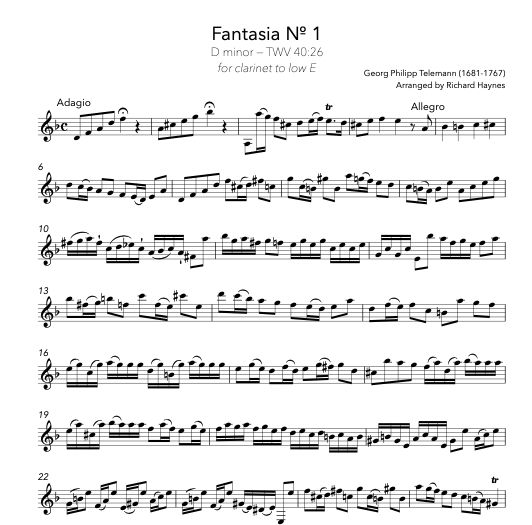On many occasions I have consciously practiced modes rather than major or minor scales and observed that these can be useful when extending technique. Inevitably, we do practice modes when we move stepwise up the major and minor scales, eg. turning C major into D dorian by playing a C major scale starting and ending on D (see my "Major Scales in Accelerating Patterns" for these kinds of exercises). So I wanted to find a way to focus on the modal qualities of pitch constellations and started to wander through them, changing only one note at a time in the order of sharps or flats, i.e. playing C major then sharpening the F, the C, the G etc. in turn. Here is an overview of how this works, moving from C Ionian through to C-double-sharp Aeolian, before the process moves onto D Dorian:
In creating this chart it was important to me make it useable by many different instruments. I chose the range between C4 and C6 so that the written modes can also be played on flute, oboe, saxophone, horn, trumpet, harp, piano, violin, viola, cello and certainly multifarious percussion instruments. Octave transpositions may be used if another range of the instrument should be exercised.
You will find that the modes have been written only using their pitches and not using any rhythms. Using the accompanying chart titled "Morphing Modes (usage)", one can practice them in many different ways using different articulations and rhythms. By laying out a page of modes and a page of usage side by side, you can combine the pitches and rhythms/articulations most easily. Feel free to use your own rhythms and articulations, perhaps there are some that are applicable to your instrument that I haven't thought of.
The tempo is up to you as well. I think that the description "as slow as needed — as fast as possible" is apt, because the player can set the metronome (and yes, please use a metronome some of the time) as slow as needed to become familiar with the material, or as fast as possible once the modes have become routine. Articulations will obviously increase the challenge of the chart, so choose them wisely. You may consider moving through the usage chart one suggestion at a time.
A dynamic range indication has also been given. It is important to practice exercises like this in different dynamics because composers don't just write mezzo-forte and often expect passage work to be played in many different dynamics. Playing them in pianissimo may show certain gaps in sound production and/or in fortissimo you may have to concentrate on intonation. Every instrument is different in this regard.
Moving through all of the ascending modes in one sitting is in my mind important to really immerse yourself in the exercise. The following day you may choose to practice the descending modes. In either direction you will practice every single modal constellation that uses half and whole tones, undoubtedly an efficient and interesting way to warm up your instrument.
I wish you enjoyment and challenge with these Morphing Modes!













